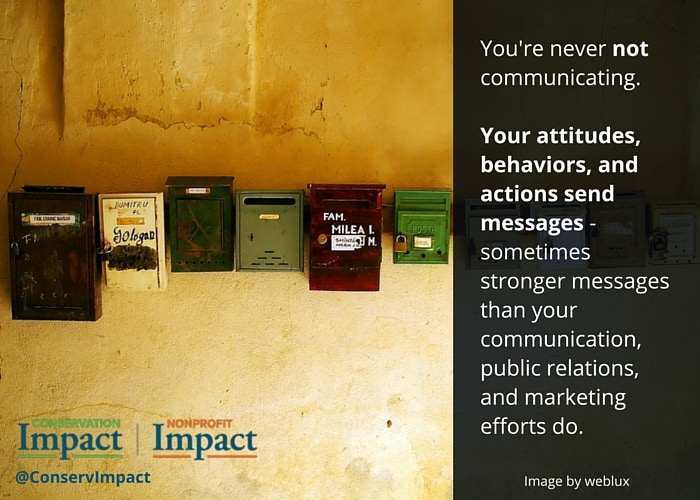
Marketing, Public Relations, Communications: What’s the Difference?
Recently we’ve received a flurry of calls from clients who want to engage new members, donors, volunteers, advocates, or participants and increase support for their cause. Specifically, they ask us to help them:
- “Reach new audiences through our public relations efforts”
- “Define the best messages for our communications plan”
- “Identify appropriate marketing and outreach strategies”
While terms like marketing, communications, and public relations are related, they are not interchangeable. Here’s how we distinguish between them.
Marketing
Marketing is:
- Defining and fully analyzing potential markets,
- Selecting your target markets (those most likely to take action on your behalf), and
- Creating outreach strategies to engage the market towards specific goals.
Essentially, marketing uses outreach strategies to entice members of a specific target market to take a specific action (e.g., donate money or participate in a program). Depending on the target market, the most appropriate outreach strategies may include direct contact, advertising, earned media, social media, or events. However, outreach strategies are only one part of effective marketing.
A comprehensive and strategic marketing approach aligns your program (or product, or service), your value proposition, and the means of delivery with the needs and interest the target market. The best outreach strategies in the world won’t entice a target market to buy a product they don’t need, support a program that doesn’t serve their interests, or participate in a volunteer opportunity that makes the miss their kid’s soccer game.
Public Relations
In contrast, public relations (or PR) seeks to build and maintain relationships with various publics and create a positive image or reputation for the organization within its broader community. Often, public relations precedes marketing. It helps create the circumstances that will allow you marketing efforts to succeed. For example, a marketing effort to attract volunteers will be less effective if no one in the community has ever heard of your organization.
Like marketing, public relations relies upon research to understand publics and uses deliberate strategies and tactics to reach those publics. Publics are more general than target markets (but not so general as “general public!”). Think of them categories of individuals or groups. Common publics our clients focus on include:
- Community leaders and influencers
- Elected or appointed decision-makers
- Community organizations and agencies
- Members of the media
Public relations is to marketing as “friend-raising” is to fundraising. In both cases, you need to lay some groundwork if you want your “ask” to be successful.
Communications
Last but not least – communications. Communications underlies both marketing and public relations (and just about everything else your organization does)! Communications involves designing messages that are resonant, delivering them your intended audiences through the right channels, and receiving feedback. Communications should have a specific purpose in mind.
The keys to truly effective communications are consistency and constancy. Repetition is good! Changing your message frequently or having too many or inconsistent messages across different audiences is confusing and ineffective.
You may feel like you don’t have enough time to be so deliberate in your communications, but remember that your actions, attitudes, and behaviors also transmit messages. Really, you’re never NOT communicating, so it pays to pay attention to what messages you are sending.
Now What?
How do you know which you should use to engage new people and build support for your cause? First consider who you want to reach and for what purpose. Then use the distinctions between marketing, public relations, and communications as a guide to assess which approach is needed in your unique situation.
Whichever approach is right for your organization, get started! Yes, nonprofit organizations and government agencies and programs have mission-related results they need to achieve. And, being sustainable requires a base of engaged constituents willing to take action on your behalf. “If you build it, they will come” is not a marketing strategy (or PR or communications strategy).
Check out Assessing Sustainability: Part 2 – Constituents to learn more about the connection between constituents and sustainability.

